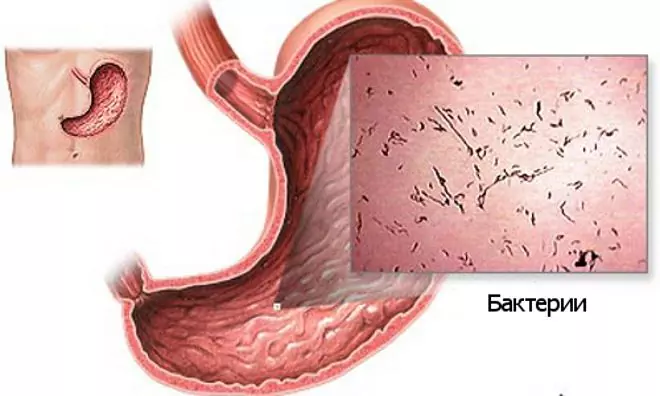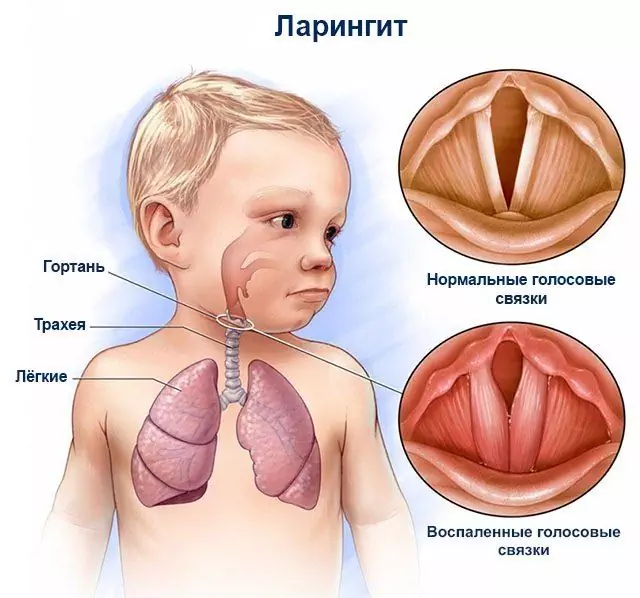- Author Rachel Wainwright [email protected].
- Public 2023-12-15 07:39.
- Last modified 2025-11-02 20:14.
Tussicode
Tussikod: instructions for use and reviews
- 1. Release form and composition
- 2. Pharmacological properties
- 3. Indications for use
- 4. Contraindications
- 5. Method of application and dosage
- 6. Side effects
- 7. Overdose
- 8. Special instructions
- 9. Application during pregnancy and lactation
- 10. Use in childhood
- 11. Drug interactions
- 12. Analogs
- 13. Terms and conditions of storage
- 14. Terms of dispensing from pharmacies
- 15. Reviews
- 16. Price in pharmacies
Latin name: Tussicod
ATX code: R05DB13
Active ingredient: butamirate (Butamirate)
Manufacturer: Pharmtechnology, LLC (Republic of Belarus)
Description and photo update: 2020-04-03

Tussikod is a drug for oral administration of an antitussive central action.
Release form and composition
The drug is produced in the form of a solution for oral administration, which is a clear liquid from colorless to pale brownish-yellow with a vanilla smell (100 or 150 ml in plastic bottles, in a cardboard box one bottle together with a dosing cup and instructions for use of Tussikoda) …
Composition of 1 ml solution:
- active substance: butamirate citrate - 1.5 mg;
- auxiliary components: glycerin, 20% sodium hydroxide solution, non-crystallizing sorbitol solution, sodium saccharinate, 96% ethyl alcohol, benzoic acid, vanillin flavor, purified water.
Pharmacological properties
Pharmacodynamics
Butamirate is a centrally acting antitussive agent. It is neither chemically nor pharmacologically related to opium alkaloids. Not addictive or addictive.
Butamirate has a direct effect on the cough center. It dilates the bronchi, providing a bronchodilating effect. Tussicode facilitates breathing, improves blood oxygenation (blood oxygen saturation) and spirometry indicators (due to a decrease in airway resistance).
Pharmacokinetics
The ester of butamirate is quickly absorbed into the bloodstream, where it undergoes hydrolysis and turns into 2-phenylbutyric acid and diethylaminoethoxyethanol. Complete absorption. The effect of food on the degree of absorption of the drug has not been studied. Plasma concentrations of 2-phenylbutyric acid and diethylaminoethoxyethanol vary in proportion to the dose taken in the dose range from 22.5 to 90 mg. The maximum plasma concentration of butamirate is reached in the blood within 1 hour after taking the solution and averages 16.1 ng / ml (when taking a dose of 90 mg). The average plasma concentration of 2-phenylbutyric acid is reached in the first 1.5 hours, diethylaminoethoxyethanol - within 0.67 hours. The maximum concentration of 2-phenylbutyric acid is 3052 ng / ml, and diethylaminoethoxyethanol is 160 ng / ml (observed after taking a dose of 90 mg).
The volume of distribution is quite large and varies in the range of 81-112 liters. The degree of binding of butamirate and 2-phenylbutyric acid to plasma proteins is high (approximately 89-92%). Diethylaminoethoxyethanol is also able to bind to plasma proteins, but to a lesser extent (by about 29-46%). There are no data on the penetration of butamirate into breast milk and through the placenta to the fetus.
Butamirate is very rapidly hydrolyzed in the blood. It is 2-phenylbutyric acid and diethylaminoethoxyethanol, formed as a result of hydrolysis, that have an antitussive effect. Subsequently, 2-phenylbutyric acid is partially metabolized by hydroxylation.
Butamirate metabolites are excreted mainly through the kidneys. The acidic metabolites bind to glucuronic acid. The content of conjugates of 2-phenylbutyric acid in urine is significantly higher than that in plasma. The half-life of unchanged butamirate, 2-phenylbutyric acid and diethylaminoethoxyethanol is 1.48-1.93; 23.26-24.42 and 2.72-2.9 hours, respectively.
Indications for use
Tussikod is used for the symptomatic treatment of dry coughs of various origins, namely:
- whooping cough;
- cough before and after surgery;
- cough during bronchoscopy and surgery.
Contraindications
Absolute:
- intolerance to fructose (since the solution contains sorbitol);
- first trimester of pregnancy;
- period of breastfeeding;
- children under 3 years old (children under 3 years old can be given butamirate in the form of drops);
- hypersensitivity to the main or auxiliary components of the drug.
Relative (Tussikod solution is used with caution):
- liver disease;
- diseases of the brain;
- epilepsy;
- alcoholism;
- tendency to develop drug dependence;
- second and third trimesters of pregnancy;
- children and adolescents from 3 to 18 years old.
Tussikod, instructions for use: method and dosage
Tussikod solution is taken orally, before meals.
Recommended doses:
- children aged 3 to 6 years - 5 ml three times a day;
- children aged 6 to 12 years - 10 ml three times a day;
- adolescents aged 12 to 18 years - 15 ml three times a day;
- adults - 15 ml four times a day.
For accurate dosing of the drug, you must use the supplied dosing cup, which should be washed and dried after each use.
If, while taking Tussikoda, the cough does not go away and persists for more than 7 days, you should consult a doctor.
Side effects
- digestive system: rarely (frequency of occurrence from ≥ 1/10 000 to <1/1000) - loose stools, nausea;
- nervous system: rarely - drowsiness;
- skin and subcutaneous fat: rarely - nettle rash, allergic reactions.
Overdose
In case of an overdose of butamirate, nausea and vomiting, dizziness, drowsiness, decreased blood pressure, diarrhea are possible.
There is no specific antidote. The patient is given activated charcoal, the stomach is washed, and other symptomatic treatment is prescribed.
special instructions
Sorbitol and saccharin are part of Tussikoda as sweeteners, so the drug can be prescribed to patients with diabetes.
The oral solution contains 96% ethyl alcohol (12.5 mg / 5 ml), that is, less than 100 mg per dose of the drug. It is precisely because of the content of ethyl alcohol that Tussikod is prescribed with caution to children, pregnant women, persons with a tendency to drug addiction, patients with epilepsy, alcoholism, as well as patients with liver and brain diseases.
Influence on the ability to drive vehicles and complex mechanisms
After taking Tussikoda, drowsiness may occur, therefore, during the period of treatment, it is recommended to be careful when driving and other vehicles and performing any work that requires concentration of attention and a quick reaction.
Application during pregnancy and lactation
Controlled studies on the effect of butamirate on pregnancy and the fetus have not been conducted. In experiments on animals, no undesirable effects of the drug on the fetus were detected. Despite this, Tussicode should not be given to women in the first trimester of pregnancy. In the second and third trimesters, the drug is used with caution, taking into account the expected benefits for the mother and the possible risk for the child.
The use of Tussikoda during breastfeeding is contraindicated, since it is not known whether butamirate passes into breast milk.
Pediatric use
It is contraindicated to prescribe Tussikod to children under 3 years of age.
Drug interactions
Tussicode should not be used concomitantly with expectorants, since it suppresses the cough reflex; this can lead to accumulation of mucus in the airways and the risk of developing a respiratory infection.
Analogs
The analogues of Tussikoda are Butamirat, Omnitus, Codelac Neo, Sinekod, Panatus, Panatus Forte, etc.
Terms and conditions of storage
Keep out of reach of children at a temperature not exceeding 25 ° C.
The shelf life of the oral solution is 3 years.
Terms of dispensing from pharmacies
Available without a prescription.
Reviews about Tussikode
According to reviews, Tussicode is a very effective remedy for relieving dry, irritating coughs. Patients note the pleasant taste of the solution, ease of use, availability and low cost of the drug.
The only drawback, according to users, is the presence of alcohol in the solution, as well as a short shelf life after opening the bottle (no more than 6 months).
Price for Tussikod in pharmacies
The price of Tussikod in the form of a solution for oral administration in 150 ml vials is about 230 rubles.

Maria Kulkes Medical journalist About the author
Education: First Moscow State Medical University named after I. M. Sechenov, specialty "General Medicine".
Information about the drug is generalized, provided for informational purposes only and does not replace the official instructions. Self-medication is hazardous to health!






